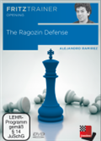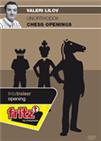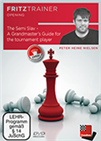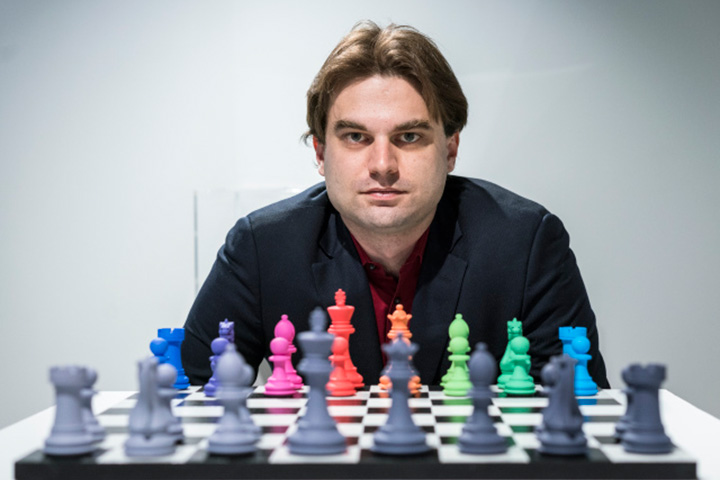New U.S. Champ now world number 30
The 53rd edition of the Capablanca Memorial has kept a traditional format of a six-player double-round-robin tournament, but the names aren't quite of the same magnitude as they used to be.
Gone is the great Vassily Ivanchuk, who must have played there ten times, and there's no Lenier Dominguez anymore. Lenier, who had led Cuban chess since the beginning of the twenty-first century, has decided to emigrate, and for now remains largely absent from chess tournaments, while living in the USA.
 The organizers did manage to score a nice coup by securing the appearance of the newly-minted U.S. Champion Sam Shankland. Sam is a hot-hand now, and he dominated the field in Havana, particularly in the stretch when he had three Whites in a row in Rounds 5-7, and won all three games!
The organizers did manage to score a nice coup by securing the appearance of the newly-minted U.S. Champion Sam Shankland. Sam is a hot-hand now, and he dominated the field in Havana, particularly in the stretch when he had three Whites in a row in Rounds 5-7, and won all three games!
Those, however, were well covered in the previous report. I regret coming too late to the Shankland party, but Sam is coasting to a tournament victory now, and his games in the eighth and ninth rounds were short draws.
The experienced Alexey Dreev kept pace with Shankland in the early going, but a missed opportunity in round six left him behind, and Alexey has been mired in draws ever since. It is tough to maintain good playing form when your primary job is in teaching and coaching — tell me about it! If anything, I admire Dreev's staying power.
 The Ragozin is being played by every top grandmaster in the world - it is time you also add it to your repertoire to get interesting and dynamic positions against 1. d4!
The Ragozin is being played by every top grandmaster in the world - it is time you also add it to your repertoire to get interesting and dynamic positions against 1. d4!
GM Alejandro Ramirez analyses every single move that White can play once the Ragozin is reached, but due to several transpositional possibilities he always emphasises strategic goals to keep in mind.Shankland drew effortlessly with black against David Anton Guijarro in round nine in a well-travelled line of the Ragozin Defence in which black gives up an unimportant pawn on move 12 but nearly 100% of the games are drawn.
There was a simple but effective tactic to exchange off the final piece leaving a dead-even queen ending.
21...Bxf2! 22.Bxe6 (marginally better than 22.Kxf2 Qc5+ 23.Kf3 Qxc4) 22...Qxe6 23.Qd8+ Kh7 24.Kxf2 Qxe4. And the players shook hands.
My attention then shifts to Anton Guijarro, the player who made the most strides late in the tournament. A 22-year-old from Spain, sporting a 2646 rating, Anton has already had notable performances, such as sharing first to third places in Gibraltar and taking a courageous trip to Siberia for the Karpov Poikovsky, both in 2017.
David started slowly in Havana, but he peaked at the right moment, having matched Shankland's streak of three wins in a row in rounds six to eight. Had Anton managed to beat Shankland in their head-to-head in round nine, we would have seen some last round drama.
Williams main teaching method behind this set of two DVDs is to teach you some simple yet effective set ups, without the need to rely on memorising numerous complicated variations.
So that was Anton Guijarro's second win with Black, and then he got White in the next game.
Aleksandr Rakhmanov is an original player, who always seeks his own path. This time his unorthodox opening didn't quite work, as soon he was forced to accept a worse position typical for a Schlechter Slav.
 How many times have you been caught off guard by a seemingly inferior and unusual opening system that later turns out to be an especially strong one? Unorthodox openings can be a real asset to anyone’s opening repertoire and they often do not contain much theory, making them easy to master for your next important tournament.
How many times have you been caught off guard by a seemingly inferior and unusual opening system that later turns out to be an especially strong one? Unorthodox openings can be a real asset to anyone’s opening repertoire and they often do not contain much theory, making them easy to master for your next important tournament.Just prior to the last round, a tragedy struck Cuba as a passenger jet crashed shortly after takeoff from Havana airport, killing 110 people in the worst airline incident in the country for decades. The players observed a moment of silence in the hall before the start of the last round.
 The Semi-Slav (1.d4 d5 2.c4 c6 3.Nf3 Nf6 4.Nc3 e6) can arise via various move orders, has decided World Championships, and is one of Black's most fascinating replies to 1 d4. Magnus Carlsen's second, Grandmaster Peter Heine Nielsen explains in detail what this opening is all about.
The Semi-Slav (1.d4 d5 2.c4 c6 3.Nf3 Nf6 4.Nc3 e6) can arise via various move orders, has decided World Championships, and is one of Black's most fascinating replies to 1 d4. Magnus Carlsen's second, Grandmaster Peter Heine Nielsen explains in detail what this opening is all about.In a Semi-Slav, Shankland equalised easily with black against Bacallao, and the Cuban then offered a dubious exchange sacrifice.
Move the pieces on the live diagram
White gets good counterplay in case of the immediate capture on f1, e.g. 18...Bxf1 19.bxc5 Bxg3 20.hxg3 Bb5 21.Nd4 Bd7 22.Rb1. However, Shankland found an antidote in 18.axb4 19.axb4 and only then 19...Bxf1 when now bxc5 is ruled out due to the open a-file. After 20.Rxa8 Qxa8 21.bxa5 Bxg3 22.hxg3 Bb5 23.Nd4 Bc6 White doesn't have nearly enough compensation.
Shankland was able to consolidate and then go on the attack with his extra rook forcing resignation just ten moves later.
Bacallao had his chances earlier in the tournament, but he's failed to win a game. Same goes for his compatriot, Lazaro Bruzon, who has three losses and the Cubans sit dead last in the standings. I guess, it is too early to talk about a downturn in Cuban chess, but political changes often lead to economic turmoil, which brings about hard times for our beloved game.
Cuban-American moves
Over the years I have witnessed a steady influx of Cuban chess players to the United States. Most of them find out that playing for big prize money in our opens is not all that it's cracked up to be, but they're a hardy bunch, and eventually, most of them settle down, giving private lessons or teaching in the schools. It's a bit harder for better players, such as Lazaro, to admit that their professional career is about to wind down. When I saw him at the Spice Cup in St. Louis last fall I thought he was joining a chess program at some university over there, either Webster or SLU. If he is, that's about the right time.
Sam is firmly in the 2700 territory now, an accomplishment that has been eluding American players outside of the 'Big Three', ever since Kamsky dropped out and Onischuk's brief visit there a few years ago. I see Shankland listed to play in the American Continental in Uruguay at the beginning of June. I suspect this commitment had been made before Sam's title run in St. Louis. Is it time to reconsider playing in some random opens? I think the Sinquefield Cup would be a better fit for Shankland.
Final standings
All games
Links


















 The organizers did manage to score a nice coup by securing the appearance of the newly-minted U.S. Champion Sam Shankland. Sam is a hot-hand now, and he dominated the field in Havana, particularly in the stretch when he had three Whites in a row in Rounds 5-7, and won all three games!
The organizers did manage to score a nice coup by securing the appearance of the newly-minted U.S. Champion Sam Shankland. Sam is a hot-hand now, and he dominated the field in Havana, particularly in the stretch when he had three Whites in a row in Rounds 5-7, and won all three games!




